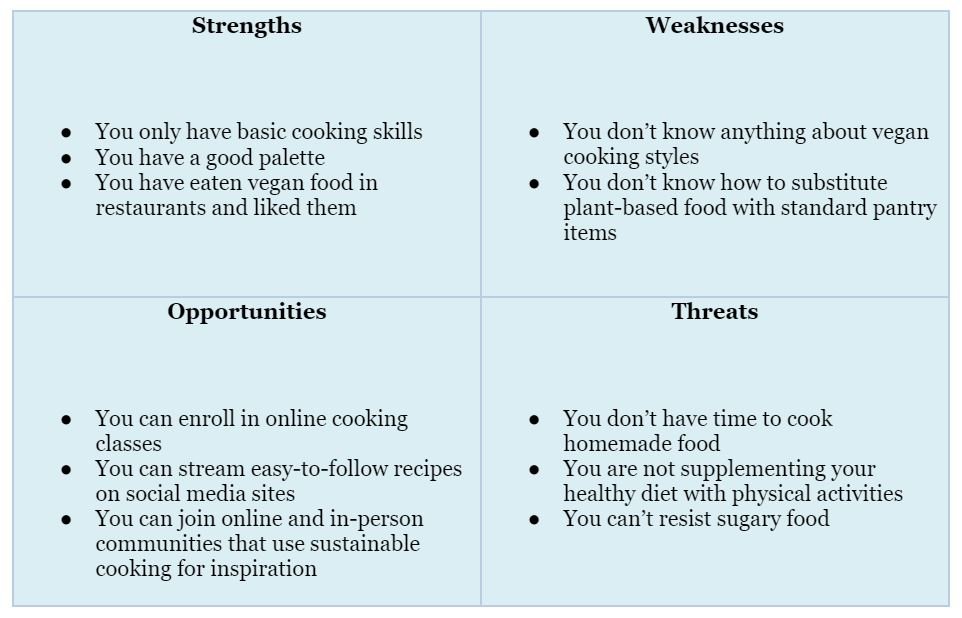How to Create a Personal Development Plan
Our generation has slipped into a robotic routine of “rise, hustle, sleep, repeat,” where we run in a race that leads us nowhere. A personal development plan can offer an effective resolution to this quandary. It focuses on meaningful goals that give your life a new direction.
How can you create a personal development plan?
You can create a personal development plan through reflective thinking and goal-oriented planning. Envision a happier and healthier future, then identify your limitations. After this, develop an actionable plan. It will help you overcome all obstacles and turn your aspirations into a reality.
This article shares a step-by-step guide on creating a personal development plan and why it’s important.
Let’s begin.
The Premise: What Is a Personal Development Plan (PDP)?
Personal development planning revolves around becoming the best version of yourself. It helps you adopt a growth mindset through purposeful habits and technology mindfulness. Consequently, turning the pursuit of happiness, health, and success into a possibility.
An effective PDP comprises a structured framework that you can track, personalize, and modify depending on your current circumstances. These factors make it easier for you to form new habits without losing momentum.
What Are the Main Areas of Personal Development?
Self-improvement planning focuses on your mental, physical, emotional, social, and spiritual well-being. The concept might be a buzzword in mindful circles, but it was manifested decades ago by American psychologist Abraham Maslow.
In 1943, the Psychological Review published his paper “A Theory of Motivation.” His essay featured a five-tier pyramid called Maslow’s Hierarchy of Needs. The theory suggested that curiosity and desire that drive our innate behavior and enable us to fulfill five aspects of life. These included physiological comfort (food and clothing), safety and protection (job and financial security), love and social relationships (family and friends), self-esteem, and self-awareness.
We need a well-balanced diet, career achievements, healthy relationships, and a positive attitude to live mindfully. These life aspects are interconnected. For instance, preliminary research reveals that post-pandemic social distancing strains familial relationships and friendships. Consequently, the dwindling connections triggered “higher levels of depression and lower levels of psychological well-being.”
Despite technological advancements, screen time cannot fill the void of healthy relationships, physical activities, and mindful endeavors. Therefore, a personal development plan should look like an extended version of the decades-old pyramid. There’s only one difference. Instead of working on one area before you unlock the other, you can simultaneously work on several aspects of self-improvement.
The next section explores how you can create a well-structured PDP.
The Process: How to Create a Personal Development Plan?
Successful self-improvement planning comprises three steps. You need to carefully analyze your current position and visualize a better future. Using SMART goals and actionable strategies can ensure that your ambitions don’t remain a wistful dream.
Here’s a closer look at the three steps of a PDP:
Step 1: Perform a SWOT Analysis
Whether you want a bigger house, a promotion, a healthier body, or even good creative writing skills, you need a strategy to accomplish these goals. Before you take a step ahead, you need to retrace your steps to understand your current circumstances.
You need to think categorically and conduct a SWOT Analysis to create a personal development plan.
What is a SWOT Analysis?
It’s a type of self-assessment that focuses on your Strengths, Weaknesses, Opportunities, and Threats.
It gives you an overview of your inherent qualities and also internal setbacks. Moreover, you get a good comparison between your prospects and the obstacles that stand in your way. You can use these analyses to identify challenges and consider the possibilities that await you.
For example, suppose you decide to go vegan to maintain a healthy weight. It might sound great on paper.
However, a SWOT analysis can predict whether or not you’re up for the challenge.
Here’s a preview of what your SWOT assessment will look like in this case:
Whether you want to drop an X number of pounds or simply want to pursue sustainable living, the table above gives you a good idea of what to expect. In this case, you need to invest time in learning new cooking skills. Additionally, you might need to restock your pantry and increase physical activity.
Otherwise, maintaining a healthy weight might remain a dream.
Step 2: Make SMART Goals in the Pursuit of Happiness
SMART goals stand for Specific, Measurable, Achievable, Realistic, and Time-Bound goals. Your SWOT analysis gave you direction. This goal-setting technique will maximize your success rates.
When you set relevant parameters to define your weight-maintenance plan, you are less likely to return to unhealthy eating habits and a sedentary lifestyle.
At the moment, our hypothetical goal is to lose weight.
You can use SMART goals to ensure you stay on track.
How to set SMART goals?
Be specific when you set your goal.
If you plan to lose weight, you need to figure out how to achieve this objective. Adopting a vegan lifestyle is one way to go about this, but you need to list specific steps required to make the switch.
A specific goal will look like this: You can swap small portions of your diet from meaty meals to plant-friendly ingredients to go vegan. In addition to this, incorporating physical activity requires you to set aside time for stretching/walking instead of jotting down “move more” in your planner.
Make sure your goals are measurable.
Select quantifiable specifics to the weight management plan. Instead of saying you will lose weight, put a number on it and decide how many pounds you’d like to drop.
Create an achievable plan and ditch those lofty ideas.
Ensure that your goals are achievable when you list them. In this hypothetical scenario, you need to scour grocery stores and ecommerce businesses. Ask around if there are vegan-friendly stores to ensure plant-based substitutes are easily available near you. Otherwise, switching to a vegan lifestyle will become impossible down the line.
Be realistic and tone down your expectations.
A proactive personal development plan emphasizes realistic tasks. In this case, losing 20 lbs on a vegan diet might not work out for you. It’s especially true for individuals who are accustomed to sitting in one place for prolonged periods. Break down your goals by aiming for 5 lbs and modifying your lifestyle choices to meet these goals.
Time-bound goals lead to better results.
Whether it’s moving more or cooking vegan food, you need to create a timeframe to increase achievability rates. We have already decided that you will lose 5 kg but how much time will it take to do that. 2-3 months seems like a reasonable amount. You can always adjust your weight-maintenance plan at a later stage.
Overall, SMART goals are a strategic way to maximize the results of your personal development plan.
Step 3: Break Down Your Goals into Actionable Steps
SMART goals are great, but they still feel unachievable when you’re bound to your technology and struggle to maintain a work-life balance. At times like these, you should create a supportive action plan that ensures you don’t drop the ball in week 1 of your PDP.
Ask yourself:
What should I do to adopt a growth mindset?
Keep moving forward even if the first few weeks of the PDP prove difficult.
How can I be more accountable?
Joining groups and asking friends/family members to partake in the same activities can boost morale. You are also less likely to skip your schedule because there’s someone watching your progress.
Are there any other resources that can support my progress?
If you're trying to maintain a healthy weight, then wearable fitness trackers, healthy mobile apps, cooking shows, and cookbooks can help.
What type of healthy habits can I pick up to achieve my SMART goals?
Cooking homemade meals, walking, cutting down on sugar-laden treats can help you get closer to your goals. Besides this, meatless Mondays and no-frying Fridays are a good way to introduce well-balanced meals into your diet plan. Remember, you will feel overwhelmed if you decide to change your routine too quickly.
Besides this, you should journal your daily activity to assess how well you’re performing.
Bonus Step: How Often Should You Review Your PDP?
You should review your personal development plan monthly or within 3-4 months. Observe whether your activities align with your goals to reduce the chances of slipping into previous habits.
What if things aren’t working out? In that case, you create a SWOT analysis to identify the strengths and weaknesses of your original plan. Think of ways to overcome those problem areas through realistic opportunities. Then proceed according to the new game plan.
Pro Tip: For more insights, you can click here to watch Alberto Nodale’s tutorial on creating a personal development plan. He shares different templates you can choose to align with your envisioned goals.
What Are the Benefits of a Personal Development Plan?
PDP allows you to steer clear of everyday stressors and mundane routines as you learn to prioritize your well-being over superficial gains. Focusing on productive tasks expands your inherent qualities and practical skills. In turn, these plans give you a transformative direction.
Here’s a closer look at the advantages of a personal development plan:
You gain more clarity and increase your motivation to prioritize self-improvement over routine activities.
PDPs give your life new meaning.
It boosts your mental and emotional well-being as you achieve long-term happiness compared to short-lived benefits.
Working towards self-care and self-improvement increases confidence.
Several other value-adding benefits follow. Each equips you with a growth mindset that improves the quality of life.
Main Takeaway
It is essential to learn how to create a personal development plan to change behaviors and routines. A PDP can reignite your passion for professional and recreational activities. You can develop a PDP through self-assessment, SMART Goals, and achievable milestones.
Schedule monthly reviews to see how you progress. Keeping a check and balance makes it easier to reform your plan for better implementation.
Best of luck!




